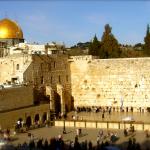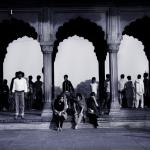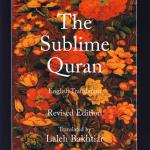In this interview with Elvira Bojadzic, painter and co-founder of Islamic Arts Magazine, Elvira discusses being a Muslim woman artist, the history of Islamic art in Bosnia-Herzegovina, and how Islamic arts and culture is recovering after Bosnian War.
IMOW: What inspired you to co-found Islamic Arts Magazine in Bosnia-Herzegovina?
Elvira Bojadzic: It all started as an idea about creating an international platform for traditional and contemporary Islamic arts. My husband and I, both artists ourselves, searched for a magazine like this online, but we couldn't find one. Islamic Arts Magazine was born and in 2009, we published our first online issue. We realized that many art events were happening on a daily basis and that we just couldn't wait for the next issue to publish them all. So we started publishing art news online as it happened. After seven amazing issues, Islamic Arts Magazine developed into an online magazine. Our website also became a platform for artists whose work we feature in our online gallery. We are now expanding into Islamic art e-Books. The first three e-Books we plan on publishing this year will cover the history and architecture of Istanbul Mosques. It is a huge project and I just can’t wait to see them published.
Is there a long heritage of Islamic art in Bosnia-Herzegovina and Sarajevo?
Our Islamic tradition and heritage dates back to the middle of 15th century, when the Ottoman dynasty brought Islam to Bosnia. As a result we have amazing architecture throughout the country. Sarajevo alone has more than 100 mosques and many interesting buildings like the Hamam, now part of the Bosniak Institute, the two bazaars—Rustem-pasha Bezistan known as Bursa Bezistan and Gazi Husrev-Bey Bezistan—and the Gazi Husrev-Bey Madrasa with Hanikah.
The field of Islamic calligraphy was also very important, since Bosnians learned the art from the masters in Istanbul. Islamic calligraphy and ebru (marbling) were passed on from master to apprentice. Crafts like carpet weaving, costume making, metalwork and woodwork became very cherished and supported by rich families. Many amazing Iranian carpets were bought and preserved in the homes of Bosnian families. In fact, our National Museum houses of the most significant Persian Art Collections in the world. Bosnian kilims using traditional Bosnian designs became well known, especially the famous prayer rugs from Banja Luka dating back to the Ottoman period.
Bosnians did not appreciate miniature painting as much as other parts of the Muslim world, since they were very conservative and didn’t want to draw or paint any figural forms. So to make miniatures, some artists emigrated to Istanbul. The most famous are Nasuh Matrakci and Osman Nakas who become very important artists in the Ottoman period.
In what ways did the Bosnian war disrupt this tradition?
By the end of 19th century, Bosnian traditional arts were already marginalized. Very small groups of artists were involved in calligraphy and ebru. After World War II, the communist regime did everything it could to stop the development of calligraphy, since it was perceived as a religious art. Any religion was not welcomed, and calligraphy artists, mainly imams, were trying to preserve a dying art. Industrial carpets became a substitute for the handmade carpets and kilims, and only a few craftsmen were making carpets by hand. The works in metal became a commercialized tourist attraction with no government support at all. The market for traditional arts was slowly disappearing.
The horrors of the war made Bosnians realize how they had almost lost their identity in many ways, and after the war there was a revival of both Islam and of love for the traditional arts. A young generation of artists are doing their best to keep the traditional arts alive. In Bosnia we have an active contemporary art scene, but there is still a long way to go until traditional arts are included in the curriculum of all arts schools.
The most recent research places the number of people killed during the war at around 100,000 and the number displaced at over 2.2 million, making it the most devastating conflict in Europe since the end of World War II. What are your memories of the war?
In the 1960s, my parents moved to Slovenia as a young couple. At that time it was all one country, Yugoslavia. My parents, as many Bosnians who came to Slovenia to earn their living, never intended to stay in Slovenia, so my mum came to Bosnia to give birth to me and later to my sister. My brother was the only sibling to have been born in Slovenia. I remember spending all vacations in Bosnia. I loved it and was always waiting to visit my grandparents and my relatives in Bosnia. I always felt a strong connection and considered myself a Bosnian.
When Yugoslavia came to an end, Slovenia was the first country to anounce its independence. And that brought the war. It was a horrifying moment when you realize that you have no control over your life or the lives of your loved ones. The war in Slovenia ended soon after since the war between Croatia and Serbia started and the Serbian forces couldn’t get to Slovenia. At a certain moment the governments of Croatia and Serbia decided it was the time to invade Bosnia and split the territory. In the process they intended to kill all Bosnian Muslims. This was not a war over the territory; it was a religious genocide planned many years before it actually happened.
My parents and I knew nothing of how our relatives were doing for so long. Not knowing when and if the war was ever going to end was an agony for us. It was hard to watch all that was happening and not be able to do anything. We were praying for our loved ones. As soon as the war ended I made the decision to return to Bosnia to begin help rebuilding it.
How did the war impact you as an artist and as a Muslim woman?
As I already mentioned, the war raised the question of my identity. Growing up in a family that didn’t practice Islam, I learned very little about Islam, mainly from my grandmother. By the time I finished high school, I became very interested in art history. I embraced Islam and started wearing hijab, and that profoundly affected my life, including my art. I discovered the beauty of calligraphy.
My art is based on creating patterns with a harf or Arabic letter. I am interested in their dynamic and expressive effect. For me, the letters are shapes that I intuitively develop into compositions. In the paintings, the harf remains recognizable but becomes part of an overall visual sensation. My work draws its inspiration from Islamic and modern abstract art, so it is a marriage of tradition and modernity.
The war triggered the search for identity or the need to reconnect with it in many artists. The diversity of Bosnian art today shows how this takes on so many different forms. In my case, it lead me to explore my spiritual identity through the lyrical beauty of Arabic letters.
Bosnia-Herzegovina has historically been a multi-ethnic state with approximately 44% of the population identifying as Muslim. Before the war, I’ve heard that there were no tensions between people of different faiths. Is that true? And what is it like now?
Historically Bosnia has always been a great example of true harmony between people of different faiths. Everyone was free to practice their own beliefs; the mosques were built next to churches and synagogues. All religions were accepted and there was a mutual respect. World War II brought communism and the united state of Yugoslavia. Religion was taken out of the cultural and political institutions, schools, and social life in general. My parents’ generation stopped practicing Islam, many didn’t believe in God anymore. There were very few practicing believers, and those were often persecuted. It was forbidden to pray at work. In schools, everyone was taught that science explained everything and all believers were perceived as ignorant, backwards, and socially unacceptable. There were no apparent tensions since everyone was shaped by these ideas.
But beneath that “ideal” picture of communist propaganda, there was a hidden hate towards Bosnians. The term Bosnian had to be removed completely. Bosnian Muslims were presented in academic circles as Croats of Islamic faith or Serbs of Islamic faith. It was an attempt to fully destroy the Bosnian Muslims as a nation. Serbs had a dream of the “Great Serbia” long before it became known, and that meant preparing the ground for the future war. Serbs were present in all Bosnian institutions, as teachers, doctors and university professors. These Serbs hated Bosnians and they still do. Since all they had in mind was the “Great Serbia” their intension was to infiltrate the hate to Bosnian Serbs towards Bosnian Muslims, so that when the time came they had a devoted army to help them commit the genocide.
The sense of nationality is so strong and that brings tensions. We have a small number of Croats and Serbs who consider Bosnia their own country. They defended it alongside with Bosnian Muslims. And they publicly condemn the war crimes and the war criminals. Others hope for a new war. Bosnian Muslims have proven that they are capable of compassion towards their neighbors, since Islam is teaching us tolerance and respect.
At the outset of the war, Serb forces attacked the Bosnian Muslim civilization population: houses were ransacked or burnt, civilians were rounded up and beaten or killed. Men and women were divided and forced into camps. Women were repeatedly raped. It’s considered a horrific example of “ethnic cleansing.” What do you wish the international community had done to help more?
The international community stood by and watched the horror that was happening right in front of their eyes. We were meant to be wiped out completely. Islam was to be removed from the heart of Europe. This was the continuation of the crusades.
We belong here. We are not immigrants. Nobody could say to us: “Return to your homes, to your countries!” This is our home and Bosnia is our country. With the United Nations arms embargo Bosnian Muslims were denied the chance to defend themselves. But all their efforts failed. Bosnian Muslims not only survived, they grew stronger.
I wish the international community would learn more about Islam and Muslims, and realize that we are a peaceful and very tolerant people. They should learn to be more tolerant not only with words but with their actions. Violence and hatred should not be tolerated anywhere in the world. We should all try to have pure hearts and true beliefs. That is the only way to succeed.
It’s been 20 years since the war. Do you feel the country and its people are healing now?
The horrors of the war left permanent marks. The feeling of identity among people living in Bosnia is now connected to their nationality and religion. There is still fear present. It will be a long journey until trust returns. The main reason for this is that to have true tolerance one must have a genuine respect. And we still don’t have that. I am hoping that my generation will be able to convey the message of peace and truth to their children. There is hope for healing, it just needs more time.
When you look back on that time, what one lesson do you want to relay to our international community, especially the younger generations?
If I had to put it in one sentence it would be: “Remember well, so that history will never repeat again!”
One important concept we’d like to portray in this exhibition is the diversity of Muslims in the world. What would you say is unique about Muslims from your region?
We live in a region rich in history, our origin can be traced back to the ancient peoples who lived here: Illyrians, Goths, Celts and Slavs. The coming of Islam helped create a society rich in belief, tradition and arts. We hold a combination of East and West inside us and in our way of life. We are unique since we are the first European Muslims.
How can our viewers get involved with Islamic Arts Magazine?
Please visit our website and Facebook page, subscribe, and post comments!
Islamic Arts Magazine is available online at islamicartsmagazine.com. You can follow us on Twitter twitter.com/IslamicArtsMag or become a member on Facebook: www.facebook.com/IslamicArtsMagazine.
- Log in to post comments




